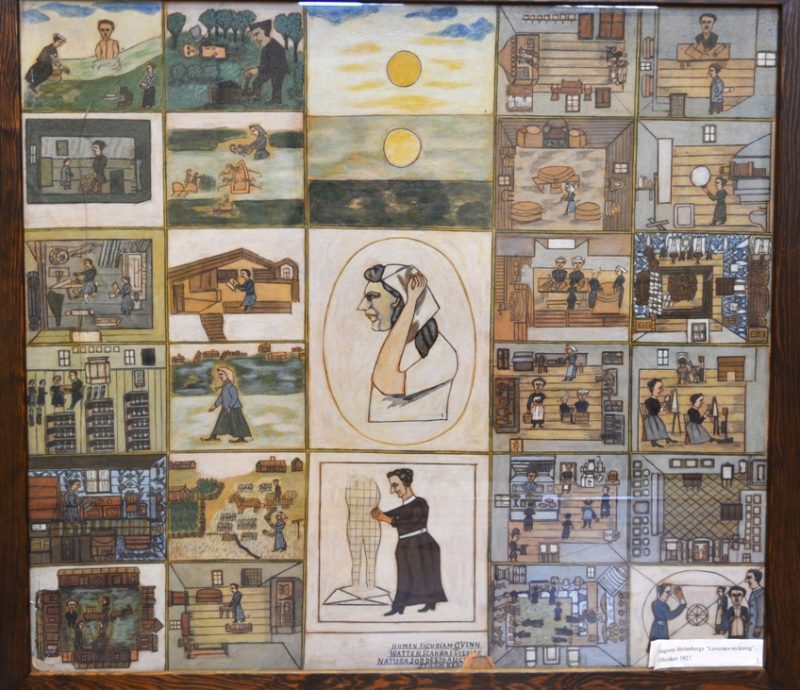In the Frame for April 2014: Augusta Strömberg
This month, In the Frame goes on holiday to Uppsala, Sweden, where our Development Officer recently visited the former Ulleråker Hospital. She writes:
Augusta Strömberg (1866 – 1954) was a patient at the Ulleråker Asylum, on the outskirts of Uppsala. Founded in 1811, the hospital services were gradually relocated and the historical buildings closed in the late twentieth century. Augusta was admitted to the institution in 1900, and diagnosed with schizophrenia. She remained at Ulleråker for most of the rest of her life, and apparently spent much of her time painting.
Her artworks are some of the most striking images on display in the museum associated with the hospital today. Largely self-taught, Augusta had nonetheless long shown a talent for art, and attempted to establish herself as an artist and portrait painter in her twenties. In Ulleråker, her stylised portraits were apparently sought after by staff, who bought artworks from her. The uniformed doctors and nurses, with their identical hairstyles, are largely indistinguishable today: as, perhaps, the people themselves might also have seemed when gathered in the wards. Their angular shoulders and stiff forms reflect a sense of order and firmness that is more formal than some of Augusta’s other portraits.

The more intricate images, however, occur in Augusta’s religious paintings. Strömberg was deeply concerned with religious themes, and had been preoccupied before her admission to hospital with creating a new religion. She continued to develop her ideas in the asylum through her artworks, often incorporating self-portraits into her images. Her hospitalisation had occurred at the age of thirty-three: the same age at which Jesus is supposed to have been crucified. This significant connection was incorporated by the artist into many of her pieces.
The image below is entitled Levernes-teckning (Autobiography), which connects Strömberg's artistic practice to her life story. Religion and art seem to be closely associated in the frame-like rooms that make up the image, and there are only a few features that distinguish church from studio. The text at the bottom of the drawing is the artist's own version of Latin, which includes several Swedish words incorporated into it.

These artworks can be viewed in the Medicinhistoriska Museum, located in the former administrative building of the hospital. Alongside an impressive collection of medical and surgical history, the museum contains an entire floor dedicated to the asylum itself. As well as Augusta’s art, there is a very varied collection of materials including a fascinating array of keys fashioned by patients out of other items and a film projector bought by the hospital in 1917. You can find out more about the museum, in English, on the Destination U ppsala website.
Images reproduced by kind permission of the Medicinhistoriska Museet, Uppsala University. With thanks to Urban Josefsson and staff at the museum.